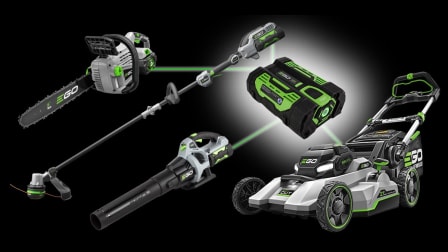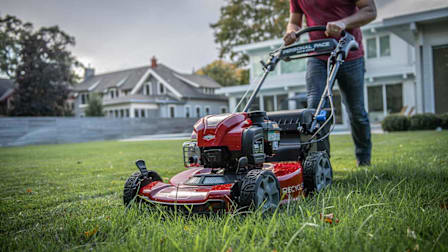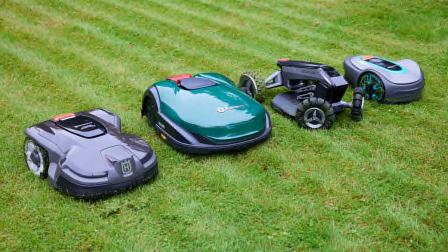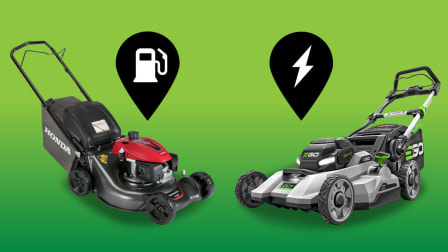Best Walk-Behind Lawn Mowers—and the Worst
The top performers in CR's unparalleled field tests come from Ego, Greenworks, Ryobi, Toro, Troy-Bilt, and others
When you shop through retailer links on our site, we may earn affiliate commissions. 100% of the fees we collect are used to support our nonprofit mission. Learn more.
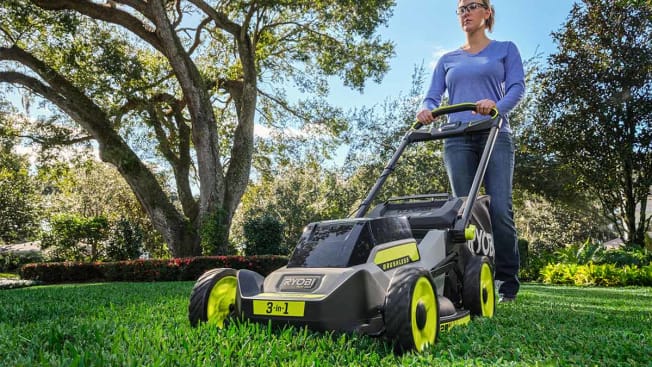
A great walk-behind lawn mower ably handles the particular challenges of mowing a smaller yard, so your grass cutting is simple and quick.
What are those challenges? You might not have even considered them.
- Best Battery Mowers: Push Self-Propelled Mowers
- Best Gas Mowers: Push Self-Propelled Mowers
- Worst Battery and Gas Walk-Behind Mowers
- How CR Tests Lawn Mowers and Tractors
“In a small yard, you’re more likely to be turning around or navigating around obstacles more often,” says David Trezza, who oversees lawn mower testing at Consumer Reports. A walk-behind mower is more appropriate for that kind of job than a tractor or riding mower, he adds, because it’s easier to maneuver.
Best Battery Push Mowers
Battery mowers are best suited to smaller yards because of their run times, which are generally 45 to 50 minutes, according to our testing. But battery technology continues to improve, and some of the best performers can provide 70 minutes or more of run time.
Many battery mowers are part of a suite of tools with interchangeable batteries, known as battery platforms. Many consumers choose these tools because they can use the same batteries for various power tools.
Best Battery Self-Propelled Mowers
Like battery push mowers, battery self-propelled mowers cut grass just as well as their gas counterparts, but they may have a shorter run time.
Best Gas Push Mowers
Gas-fueled mowers aren’t limited by rechargeable batteries and can cut much larger yards in one go (assuming, that is, you have enough gas on hand).
Best Gas Self-Propelled Mowers
Gas self-propelled mowers usually cost less than their electric counterparts, though you might spend more in the long run on fuel and maintenance.
Worst Battery and Gas Walk-Behind Mowers
More than a third of the walk-behind mowers in our ratings perform well enough for CR to recommend them. Others struggle in our exhaustive tests, lack key features, or earn unimpressive or downright dismal reliability scores based on our member surveys. Here’s a list of a few battery and gas push models that miss the mark. Check CR’s mower ratings for a more complete list.
How CR Tests Lawn Mowers and Tractors
To get you ratings and reviews of the latest models by early spring, our testers travel to our mower-testing facility in Fort Myers, Fla., to conduct tests in late winter at grounds we prepare each year. We plant 1,800 pounds of grass seed (predominantly annual rye, prized for its dense growth) and cut 500,000 square feet of grass in three modes—mulching, side discharging, and bagging (a total of 3,000 pounds of clippings). We mow both level turf and slopes to get a feel for each model’s performance and review the convenience features.
A model’s Overall Score incorporates all that performance data, along with predicted reliability and owner satisfaction ratings from our latest member surveys. The surveys leverage data on 15,532 battery walk-behind mowers and 18,664 gas walk-behind mowers that members purchased between 2014 and 2024.





























